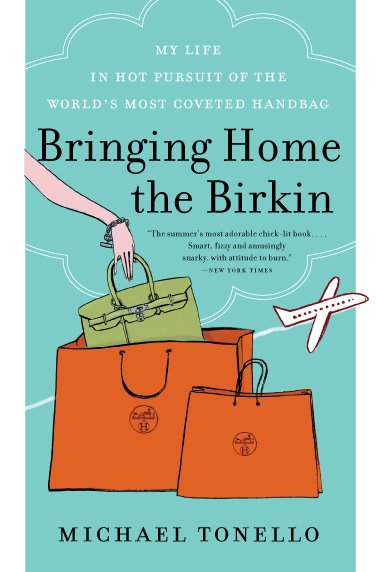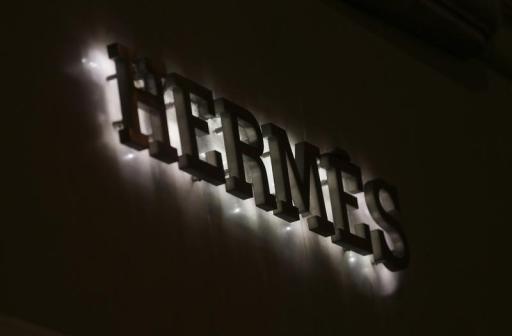CLAD in a red Dolce & Gabbana
dress, with her trademark bows in her hair, Pixie swings her mini-Birkin
in the air and shrieks with laughter.
She gives the strap of the $12,000 Hermès bag a hearty nibble then
wails in frustration when her little fingers can’t open the clasp to
reach the chocolates inside.
Draped in more designer items than
most adults would wear in their lifetime, it’s all in a day’s work for
kid-trepreneur Pixie Curtis, who, apart from screaming in terror at the
sight of a sausage dog, doesn’t seem fazed by the team of stylists,
photographers and assistants around her at the
Sunday Style photoshoot.
Which is all the more remarkable, as she’s only three years old.
But then, everything about Pixie’s life is remarkable – she’s just not aware of it yet.
Thanks to the assiduous skills of her mum, Sydney publicist
Roxy Jacenko, Pixie has become one of the most famous – and wealthiest –
little girls in social media.
In the alternative universe of Instagram, Pixie is a very big deal indeed.
She’s
racked up 107,400 followers and, represented by Jacenko’s management
arm, Ministry of Talent, charges clients $500-plus per product placement
on her feed.
She’s up there with some of the world’s biggest
child stars – such as 15-month-old Millie-Belle Diamond from Sydney, who
boasts 133,000 followers; LA’s Mini Style Hacker, Ryker Wixom, five,
with 259,000 fans; and five-year-old American Gavin Duh, 173,000 fans.
But
they can all only aspire to reach the dizzy heights of five-year-old
South Korean-born Breanna Youn, who delights 1.3 million followers with
her daily fashion updates.
But where Pixie leaves her rivals in
the dust is with her business, Pixies Bows – a range of hair bows and
accessories with a multimillion-dollar turnover.
“I look at this whole thing from afar and think, ‘This is not normal,’” concedes Jacenko, 35.
“The Instagram following is not normal, Pixies Bows is not normal.
“I didn’t think you could do so well out of a hair-bow business, but if you see an opportunity, if you’re savvy you maximise it.
“People were asking where she got her hair bows,” she recalls.
“I thought, ‘Bugger telling people where to get them, I’m going to make them.’”
Pixie Rose Curtis is already a seasoned traveller and has a huge Instagram following.
She began manufacturing them in China and now they’re
stocked all over the globe and have been worn by celebrity offspring
including Suri Cruise, Haven Warren (Jessica Alba’s daughter), and Sarah
Jessica Parker’s twin daughters, Marion and Tabitha.
All profits
go into Pixie’s savings, and although her mum is coy about figures,
sources suggest Pixie has enough that she’d never need to work.
Pixie’s jet-set life is the stuff of fantasy – and what earned her an enormous following to begin with.
Just
before this cover shoot, she’d been on a five-star trip to Dubai to
launch her bows in the UAE, staying at the luxe Atlantis, The Palm
hotel.
Before that, she’d been to the Mercedes-Benz Fashion Week Australia.
She’s
pictured having a pedi at The Langham Sydney, parking her mini Merc
next to Mummy’s Bentley and holding her Birkin outside Cecconi’s on a
trip to LA.
The latter sent her global fans into a frenzy.
“She’s
not on the internet doing the wrong thing; she’s on the internet being a
kid. She’s doing things in a very fortunate capacity, but they’re not
detrimental. It’s my job as her mother to protect her.”
Jacenko says it all began after a photo of Pixie on a family holiday in Italy.
“It really took off when we travelled to Europe and I gave her a plastic wine glass as she sat by the pool,” she says.
The
holiday snaps – which included Pixie boarding a private jet, riding a
helicopter and playing with Louis Vuitton luggage – led to BuzzFeed
calling her “the Princess of Instagram”.
Overnight, her Instagram
profile – which Jacenko says she started like any mum, “as a bit of
fun”– went to 60,000 followers in two days.
It’s now almost double the size of Jacenko’s own.
And while it may not have been started commercially, Jacenko, as owner of Sweaty Betty PR, was quick to see the potential.
“People
were sending her gifts. I don’t really have time to write thank-you
notes, so the quickest way was to post a picture on Instagram,” she
says.
“Then people offered to send her garments or toys and pay to
post them, and you know what? It never really crossed my mind if it was
right or wrong.”
Pixie wearing a Dolce & Gabbana dress, one of her own Pixie Bows and Armani Junior shoes.
Now Pixie has become a brand, touted as “the voice of her generation” according to Jacenko’s PR blurb.
Her bio lists “relationships” with Seed Heritage, Crocs, Best & Less and Pottery Barn.
Pixie
clearly enjoys herself – she’s a funny, charming and sweet little girl
who seems unaware that her lifestyle is anything out of the ordinary.
Despite
the fact she came in a Burberry trench and Stella McCartney sandals,
she’s holding Mum to the promise they’ll go and buy a 100 per cent
polyester Elsa
Frozen frock as a treat.
Jacenko says Pixie’s life is simply her life.
“She
goes to preschool like every other kid, but when there’s free time, I
try to expose her to as much as I can – whether it be travel or a
fashion show,” she says.
“I suppose it’s not normal for a three-year-old, but if I’m doing it, she has to come with me.”
Doesn’t she worry she’s commercialised her daughter? No, she says definitively.
“As
long as the child is having fun and is not in danger, it doesn’t cross
my mind it’s wrong. When she’s not having fun, we’ll stop.”
“For
now she is having fun, there are opportunities – she’s in a position
where she’s making money. Is the child in danger? No. Is she having fun?
Yes. Is she being given opportunities to be a well-rounded person?
Yes.”
On cue, a not-having-fun-any more Pixie wails, “Mum, can we gooo?”
Jacenko seamlessly assures her they’re waiting for “the man to bring the car”, even though she drove herself.
“I live for the now, and as long as there are opportunities, it’s OK,” Jacenko adds.
“If, in a year or six months, she doesn’t want to do it, I’ll stop.
“But she’s not doing anything unusual – it’s not dissimilar to a child modelling.”
And yet it is unusual that a three-year-old has her own business, social-media profile and blog.
It is unusual that she carries a handbag that costs the same as a small car.
“No, it’s not really her bag. It’s mine,” Jacenko explains.
“Shame on me if I did buy her that bag. She doesn’t have extravagant things like that. I’m not an idiot.
“If she had $12,000, that should go in the bank to put towards a deposit when she’s old enough to buy property.”
And
what does she say to critics who suggest she’s pre-determining her
future? What if Pixie wanted to be a criminal lawyer, say, or Prime
Minister?
“From a long-term perspective, I haven’t even really thought about it,” she says.
“For now she is having fun, there are opportunities – she’s in a position where she’s making money.
“Is the child in danger? No. Is she having fun? Yes. Is she being given opportunities to be a well-rounded person? Yes.
“She had to go to bed early last night because she had to come to a job today.
At the end of the job she can go and do something fun.
“I don’t care what other people think, I’ve been judged since I started my own business at 24. I’m used to criticism.”
Pixie wearing one of her own bow creations from Pixie Bows.
Pixie is an Instagram star thanks to her mum.
Jacenko dismisses the concern that a childhood littered over the internet could affect that child’s future.
“I
don’t see that any of the pictures would be to her detriment in the
future. She’s not exposed in a Miley Cyrus way,” she says.
“She’s not on the internet doing the wrong thing; she’s on the internet being a kid.
“She’s doing things in a very fortunate capacity, but they’re not detrimental.
“It’s my job as her mother to protect her,” she continues.
“I
have to make sure I do the right thing for my family, provide for my
family, give my children the best possible upbringing I can and an
understanding that you have to conduct yourself in an appropriate
fashion in all walks of life.”
“Responsibility” is a word that reoccurs regularly in Jacenko’s vocabulary.
Jacenko
is married to investment banker Oliver Curtis, son of mining magnate
Nick Curtis, with whom she has Pixie and a son, Hunter, born last year.
One of the Instagram posts of Pixie.
Roxy and her daughter Pixie.
Curtis is currently awaiting trial over conspiracy to commit insider trading, to which he’s pleaded not guilty.
Does she feel an added sense of responsibility because of her husband’s legal problems?
“I have a responsibility to the family irrespective of that court case,” she says.
“I think it’s because I watched my parents work so hard that I have this in-built in me.
“I have a responsibility, not only to Ollie but also the children.
“It’s an obsession of mine to make my mother proud. That’s more than anything.
“I want my mum to think I did my very best.”
Jacenko says her childhood has shaped her parenting style.
Although born into money, she was taught to work for what she wanted.
“My parents gave me a strong work ethic.
“Yes, I came from a very comfortable family, had private schooling and was given every opportunity.
“But
from the age of 14 I worked every evening, and in my early twenties I
worked a weekend job – because I wanted to create something for my
future.
“I’d like to see Pixie do what I did and buy an apartment on her own, not to be someone who has their hand out.
“I have the ability to give her everything, but you know what? I don’t want to do that.
“I
often hear, ‘Oh, her parents are very wealthy; they bought her her
business,’” she says, adding, “I laugh and say, ‘Come be a fly on the
wall in my business’ – I have more aggravation in my life than anyone
would care to take note of.”
Some of that aggravation is with her
family – she’s estranged from her fashion manufacturer father, Nick
Jacenko, and doesn’t speak to her younger sister, Ruby, after she took
out an AVO against her following a fight in a club in 2008.
Pixie graces the cover of Sunday Style magazine.
But none of this can stop the whirlwind that is Roxy and Pixie Inc.
“I
work seven days a week to have the life I have. But I have a
responsibility to support my family and to give them the best
upbringing, and that comes from work,” she says.
“I am obsessive over it.
“But I was brought up to know that nothing comes from nothing.”
So what’s next?
Hunter
just celebrated his first birthday – the party featured on his sister’s
Instagram feed, and he has his own profile, of course.
So can we expect Brand Hunter?
“I have no plans for that,” Jacenko says.
“If you try to manufacture something, it won’t work.”
But after a pause she adds, “Although, if something came up and it was suitable, well then, maybe.”
Originally published as There’s something about Pixie













































